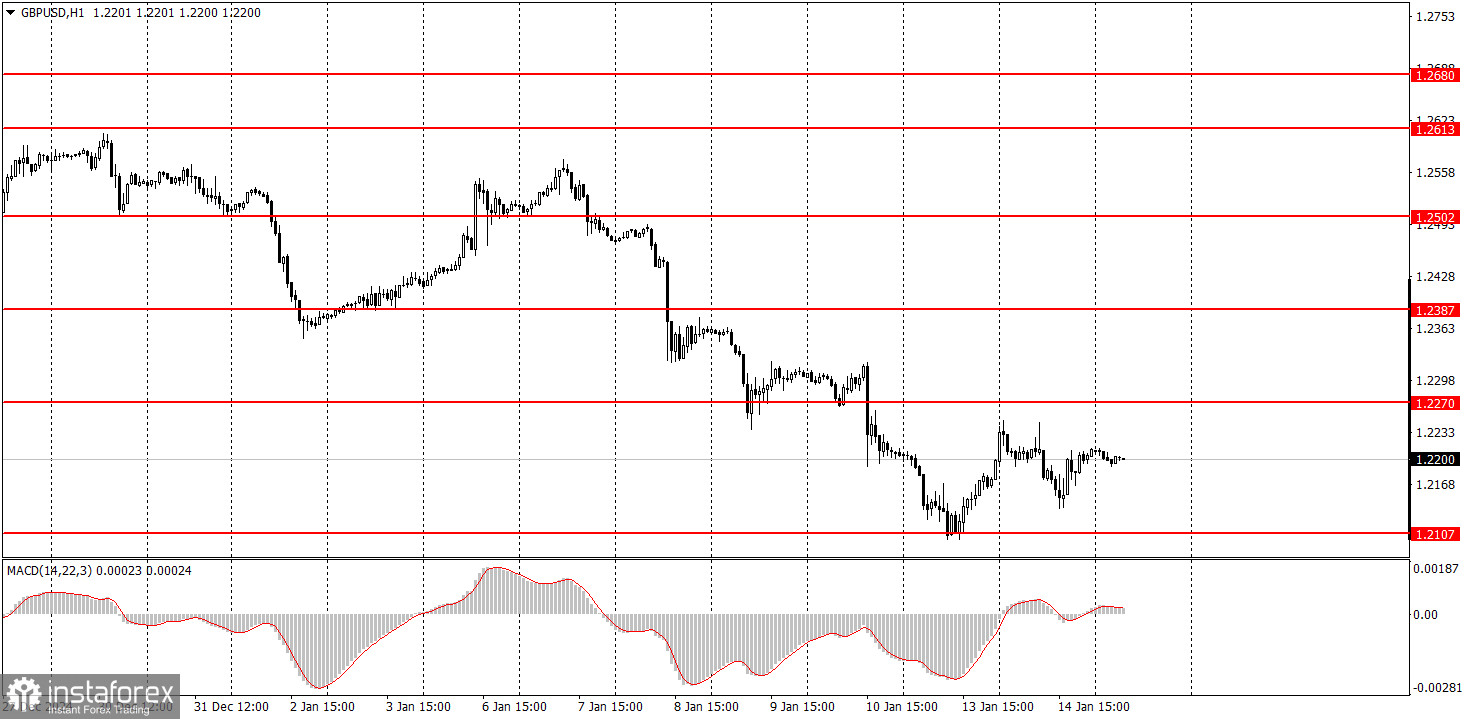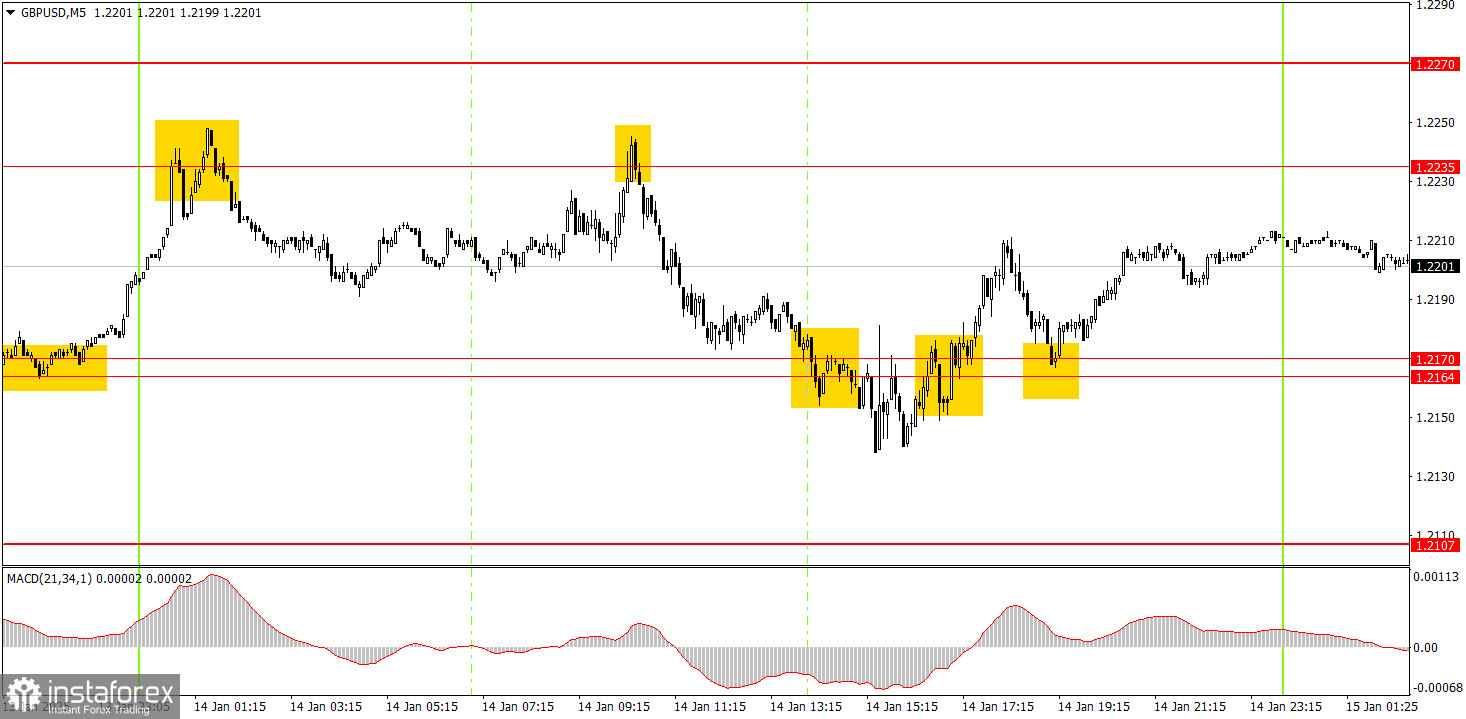Analysis of Tuesday's Trades
1H Chart of GBP/USD

On Tuesday, the GBP/USD pair attempted to continue its upward correction but ultimately stumbled again. Throughout the day, the British pound experienced more declines than gains. Similar to the euro, there were no specific reasons for this latest drop in the pound sterling; however, the global economic backdrop continues to apply significant pressure on the currency. As a result, the pound has struggled to mount a proper correction, showing only brief pauses before resuming its decline.
Today is a critical day for the British currency. Inflation reports from both the UK and the US could lead to another decrease in the pound's value. While these reports might also support the British currency, US inflation is almost certain to rise, which would bolster the dollar. In contrast, UK inflation will hold secondary importance, as the Bank of England is not currently considering a reduction in its key interest rate. Thus, inflation is not significantly influencing the decisions of the British central bank at this time.
5M Chart of GBP/USD

On the 5-minute timeframe, several trading signals were generated on Tuesday. The first sell signal occurred near the 1.2235 level and was strong enough to push the price down to the 1.2164–1.2170 area, where it even broke through. However, the decline did not continue, and the price quickly returned above this level. At this point, short positions should have been closed.
The consolidation above the 1.2164–1.2170 area served as a buy signal, followed by another buy signal from the same area a little later. Novice traders could have profited from both of these signals.
Trading Strategy for Wednesday:
On the hourly timeframe, the GBP/USD pair is continuing to form a downward trend, with the pound falling almost daily. In the medium term, we strongly believe the pound could decline to 1.1800, as this appears to be the most logical outcome. Therefore, further declines are anticipated; however, as always, trades should be based on technical signals.
On Wednesday, GBP/USD may move in various directions, potentially reversing course multiple times throughout the day.
On the 5-minute timeframe, trading levels are currently at: 1.2010, 1.2052, 1.2089-1.2107, 1.2164-1.2170, 1.2235, 1.2270, 1.2316, 1.2372-1.2387, 1.2445, 1.2502-1.2508, 1.2547, 1.2633, 1.2680-1.2685, 1.2723, and 1.2791-1.2798. On Wednesday, the UK and the US are scheduled to release their inflation reports for December. These reports are significant and can trigger strong reactions in the market.
Core Trading System Rules:
- Signal Strength: The shorter the time it takes for a signal to form (a rebound or breakout), the stronger the signal.
- False Signals: If two or more trades near a level result in false signals, subsequent signals from that level should be ignored.
- Flat Markets: In flat conditions, pairs may generate many false signals or none at all. It's better to stop trading at the first signs of a flat market.
- Trading Hours: Open trades between the start of the European session and the middle of the US session, then manually close all trades.
- MACD Signals: On the hourly timeframe, trade MACD signals only during periods of good volatility and a clear trend confirmed by trendlines or trend channels.
- Close Levels: If two levels are too close (5–20 pips apart), treat them as a support or resistance zone.
- Stop Loss: Set a Stop Loss to breakeven after the price moves 20 pips in the desired direction.
Key Chart Elements:
Support and Resistance Levels: These are target levels for opening or closing positions and can also serve as points for placing Take Profit orders.
Red Lines: Channels or trendlines indicating the current trend and the preferred direction for trading.
MACD Indicator (14,22,3): A histogram and signal line used as a supplementary source of trading signals.
Important Events and Reports: Found in the economic calendar, these can heavily influence price movements. Exercise caution or exit the market during their release to avoid sharp reversals.
Forex trading beginners should remember that not every trade will be profitable. Developing a clear strategy and practicing proper money management are essential for long-term trading success.





















